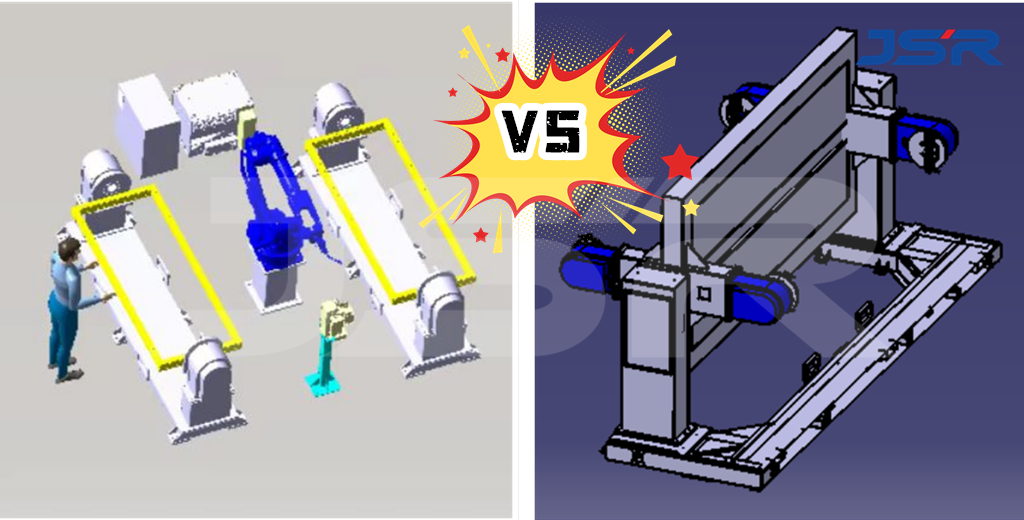Recently, a customer friend of JSR customized a robot welding pressure tank project. The customer’s workpieces have various specifications and there are many parts to be welded. When designing an automated integrated solution, it is necessary to confirm whether the customer is doing sequential welding or spot welding and then completely using the robot. To be done. During this period, I found that he had doubts about the choice of positioner, so JSR briefly introduced it to everyone.
Dual-station Single-axis Headstock and Tailstock Vertical Flip Positioner
VS Three-axis Vertical Flip Positioner
In the robot welding workstation, the dual-station Single-axis headstock and tailstock vertical flip positioner and the three-axis vertical flip positioner are two common positioning equipment, and they have their own advantages in different application scenarios.
The following are their application scenarios and comparisons:
Dual-station single-axis head and tail frame positioner:
It is suitable for scenarios where the workpiece needs to be rotated and positioned during the welding process. For example, in the car body welding production line, two workpieces can be installed at two stations at the same time, and the rotation and positioning of the workpieces can be achieved through a single-axis head and tailstock positioner, thus improving production efficiency.
https://youtube.com/shorts/JPn-iKsRvj0
Three-axis vertical flip positioner:
Ideal for complex welding scenarios that require rotating and flipping workpieces in multiple directions. For example, in the aerospace industry, complex welding of aircraft fuselages is required. The three-axis vertical flip positioner can realize multi-axis rotation and flip of the workpiece in the horizontal and vertical directions to meet the welding needs at different angles.
https://youtu.be/v065VoPALf8
Advantage comparison:
Dual-station single-axis head and tail frame positioner:
- Simple structure, easy to operate and maintain.
- Two workpieces can be processed at the same time to improve production efficiency.
- Suitable for some simpler welding tasks, such as workpieces requiring a single axis of rotation.
- The price is cheaper than the three-axis vertical flip positioner.
- Welding is switched between the left and right stations. When welding at one station, workers need to load and unload materials on the other side.
Three-axis vertical flip positioner:
- It can realize multi-axis rotation and flipping and is suitable for complex welding tasks.
- During robot welding, workers only need to complete loading and unloading workpieces on one side.
- Provides more positioning flexibility and accuracy, which can meet the requirements of various welding angles.
- Suitable for workpieces with high welding quality and precision requirements.
To sum up, choosing a suitable positioner depends on the specific welding task requirements, including factors such as workpiece complexity, welding angle, production efficiency and welding quality requirements.
Post time: Feb-20-2024

